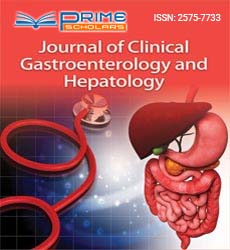Commentary - (2023) Volume 7, Issue 2
The Degree of Pathogenicity a Social Event or Species of Creature as the Power of a Natural Element
Roberta Pagon*
Department of Geography, Swansea University, UK
*Correspondence:
Roberta Pagon,
Department of Geography, Swansea University,
UK,
Email:
Received: 29-Mar-2023, Manuscript No. IPJCGH-23-16560;
Editor assigned: 31-Mar-2023, Pre QC No. IPJCGH-23-16560 (PQ);
Reviewed: 14-Apr-2023, QC No. IPJCGH-23-16560;
Revised: 19-Apr-2023, Manuscript No. IPJCGH-23-16560 (R);
Published:
26-Apr-2023, DOI: 10.36648/2575-7733.7.2.19
Description
The persistent damage to the mucosa caused by the well-established H. pylori infection causes stomach decay. The glandular layer is destroyed as a result of this incessant neurotic cycle, which is then followed by stringy substitution. This results in the mucosal disintegration or ulceration. The most notable microorganisms in gastric carcinogenesis are EBV and pylori. H. pylori accounts for 65%-80% of essential GCs, while EBV causes 10% of GC cases, making it a significant risk. Moreover, it has been represented various microorganisms are in like manner associated with gastric malignancies. Since more than half of the population is infected with this gram-negative bacterium, Helicobacter pylori is the most widely recognized bacterial agent known to cause cancer. It is also considered to be one of the best microbes that can infect humans. On the off chance that not treated, colonization commonly endures forever. H. Salmonella, Shigella, Campylobacter, obtrusive E. coli, and Yersinia are the primary microbes in this group. Specifically, harmfulness is the level of pathogenicity inside a gathering or animal types and the force of an organic entity to create sickness, while pathogenicity is the quality or condition of being pathogenic. Infectious diseases are brought on by pathogens-bacteria, fungi, protozoa, worms, viruses, and even prions-infectious proteins. All things considered, microorganisms ought to have means of entering their host and avoiding immediate destruction by the resistant framework of the host. Disease is not caused by most bacteria. On the surface, there are four kinds of early gastric cancer: Type I is characterized by growth that protrudes, Type II is characterized by growth that is superficial, Type III is characterized by growth that excavates, and Type IV is characterized by growth that infiltrates and spreads laterally. Helicobacter pylori is the type of bacteria that causes gastritis the most frequently. Adenocarcinoma is the most common type of malignant growth in the stomach. Around 90% of stomach disease cases are brought about by adenocarcinoma. More than just excessive gastric acid secretion is the cause of peptic ulcer disease. Another explanation is that the mucosal safeguards against corrosive in the stomach debilitate. The upper gastrointestinal tract stays healthy by maintaining a balance between “hostile” factors like gastric acid and H. Although H. pylori infections do not have a specific stage, certain stages of the disease are well-described. Ongoing gastritis is the primary stage, trailed by atrophic gastritis, which is the subsequent stage. Digestive metaplasia, which may progress into dysplasia, is the third stage. More often than not, a contamination with the microorganisms Helicobacter pylori or taking calming meds like headache medicine and ibuprofen can prompt stomach ulcers. Pathogens fall into five broad categories: Bacteria, fungi, viruses, protozoa, and worms the section on the right lists a few typical microorganisms present in each group. Numerous microbes are to blame for disease in the intestines. Bacteria like E. coli, Salmonella, Shigella, Campylobacter, Clostridium, and viruses like the Norwalk agent, rotaviruses, and parasites like Giardia, Entamoeba, and Ascaris can cause diseases in the intestines. Some of the most common problems include heartburn, cancer, irritable bowel syndrome, and lactose intolerance. Illnesses of the intestinal system include: Gallstones, cholecystitis, and cholangitis. Examples of problems with the rectum include proctitis, hemorrhoids, anal fissure, and rectal prolapse.
Acknowledgement
None.
Conflict Of Interest
The authors declare that they have no conflict of interest.
Citation: Pagon R (2023) The Degree of Pathogenicity a Social Event or Species of Creature as the Power of a Natural Element. JClin Gastroenterol Hepatol. 7:19.
Copyright: ©2023; Pagon R. This is an open-access article distributed under the terms of the Creative Commons Attribution License, which permits unrestricted use, distribution, and reproduction in any medium, provided the original author and source are credited.

